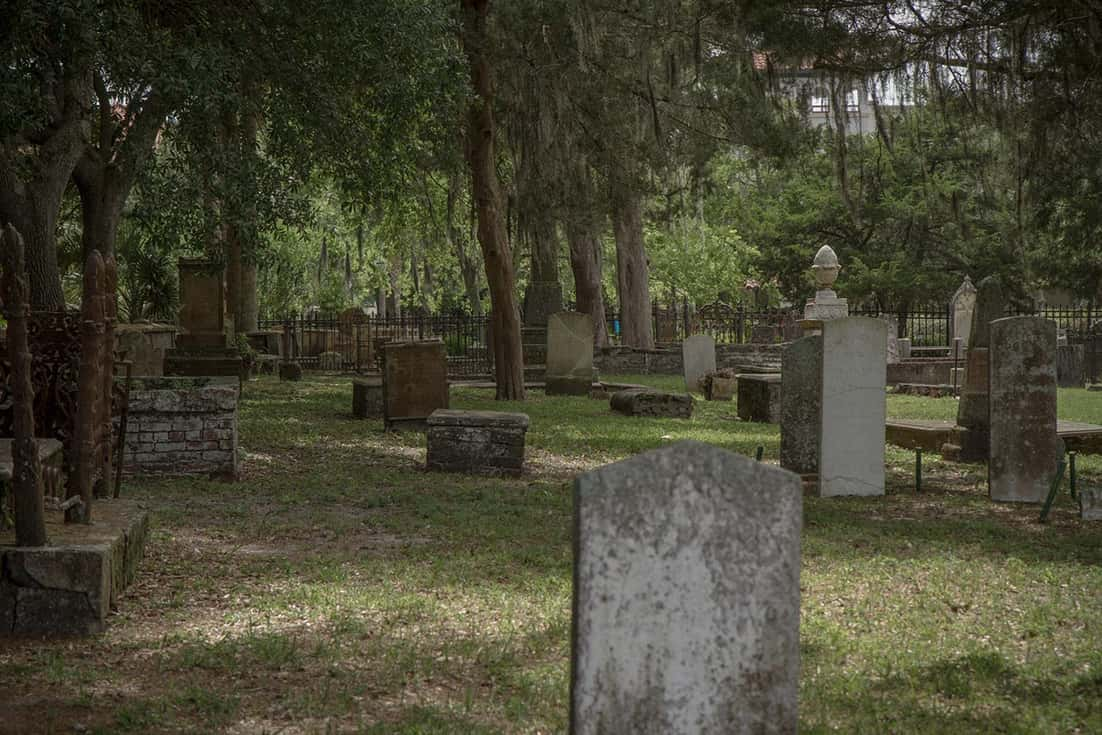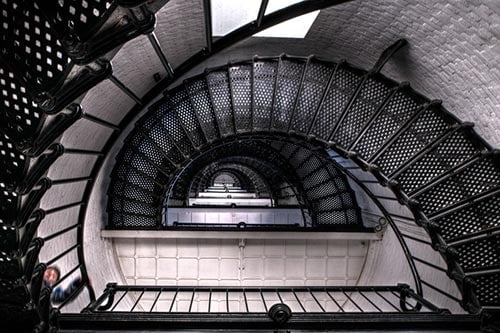118 Avenida Menendez, St. Augustine, FL
With the establishment’s string of eerie occupants, this 230-year-old structure isn’t for the faint of heart. One inhabitant was a war widow while another owned a wax museum; another tenant belonged to two secret societies. Spontaneous combustions, cryptic apparitions, accounts of the unaccountable... What’s haunting O.C. White’s?

Customers witness cryptic apparitions, detect unexplained odors, or watch locked doors unlock at will. Objects appear and reappear. Glassware spontaneously combusts. Candles relight after being blown out, flicker and fume. One eyewitness saw the salt and pepper shakers cross the countertop, untouched by human hands.
Even Historic St. Augustine refers to the restaurant as “haunted,” an unusual descriptor for a daytime guidebook. One poltergeist, a war widow, wrote love letters to her late husband. Later inhabitants were involved in secret societies or made lifelike replicas of human figures.
Who are these proprietors – or poltergeists?
The widow of a well-decorated military officer, Margaret Worth lived in the mansion from 1850 until 1869. Her husband died of cholera in 1849, leaving his surviving wife to fend for herself. Her purchase of the property was out of bereavement, though she consoled herself by writing letters to her late spouse. Some say that she kept the notes until death.
Margaret resided within the mansion until the end of her life, living alone until 1865. Although she eventually allowed her daughter and son-in-law to move into the estate, she died four years after.
Customers claim that she’s a specter among the seafood, roaming the halls of O.C. White’s. Some say that she sets and un-sets the tables, perhaps trying to lend a hand to the service workers.
Does Margaret haunt the property today, consorting with spirits? Does she lurk about, her hands gliding lightly against her love letters?
Margaret’s body left, but her intentions have stayed behind.
Once, the Worth Mansion was struck by fire, severely damaging the third floor. Margaret’s portrait was left unaffected, untouched by the flames. Those sensitive to spiritual energies suggest that Margaret was protecting the remains of her residence.
Male poltergeists are also sighted, leading many to believe that Margaret isn’t haunting the home alone. Some allege that Colonel T. Sprague, her son-in-law, is her fellow phantom. He’s often spotted in the mirror of the men’s restaurants wearing a bowling hat. Is this supernatural tenant here to stick around?
Built by Don Miquel Ysnardy in 1790, this coquina brick, three-story-structure was one of St. Augustine’s first hotels. Ysnardy acquired the property as a private residence, yet sold it to a lodging mongrel eight years after. It remained a commercial property until Margaret Worth's ownership in 1950.
Ysnardy, "a prominent St. Augustinian” and merchant, shipowner, and military official, had the structure built from an earlier foundation. Remnants of the former residence, such as the walls and bricks, were utilized for the new construction. He located the building on the west side of Marine Street, across from its current location.
In 1799, Ysnardy inexplicably sold the residence as a commercial property. It operated as a hotel until 1850.
Originally designed in Spanish Colonial Style, the home's architecture was updated once it was purchased by Margaret Worth. Margaret was the widow of Major General William Worth, a profoundly decorated officer. He was so well-known for ending the Second Seminole War that Fort Worth, Texas and Lake Worth, Florida bear his name.
Yet his accomplishments came to an end once he left St. Augustine: he contracted cholera, sequestered to Texas for the Mexican-American War. Major General William Worth died soon after, leaving his widow alone. To ease her bereavement, Margaret purchased what came to be The Worth Mansion – later O.C. White’s.
Margaret maintained the Spanish Colonial Style home until her death, leaving it to her son-in-law, Colonel John T. Sprague. Her daughter, not legally allowed to acquire property as a woman, had to receive the estate through her husband. You’d think she’d haunt the house, too.
This Avenida Menedez estate stayed in the delicate hands of their heirs until the turn-of-the-century.
In 1904, Pantaleon Felix Carcaba purchased the property. Carcaba was a local cigar maker who belonged to two secret societies, the Elks and the Knights of Pythias. Caraba was also the first to open a cigar factory in St. Augustine, traveling regularly to Havana for tobacco. Does that explain the inexplicable odors?
Carcaba later sold it to George L. Potter of Potter’s Wax Museum, who relocated the house to its bayside residence. Like Worth, Potter was a widower. Potter was also the originator of the first wax museum in the United States, though he didn’t begin his collection of wax figures until he purchased the house. Did Potter keep his waxy, human replicas within the residence?
The Worth Mansion was moved to its current location in 1961, renovated to look as it did in the mid-1800s. It overlooks the City Yacht Marine and the Bridge of Lions.
In the 1990s, David White purchased the property, converting it to O.C. White’s. It’s now an eatery, famous for seafood and “spirits.” You’ll want reservations if you’re dining at this haunted spot! And have your camera ready for a quick specter snapshot.

St. Augustine's famous haunted Fort

One of St. Augustine's haunted cemeteries

The famous haunted Lighthouse